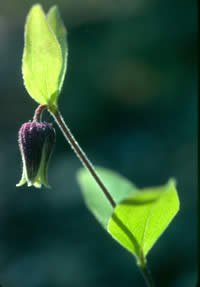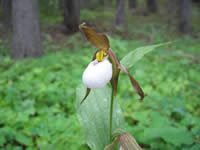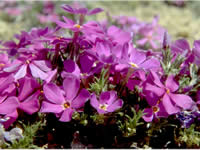USDA Forest Service Celebrating Wildflowers
|
|
|
Are All Rare Plants Endangered?No! Not all rare plants are endangered. "Endangered" has a specific legal meaning under the Federal Endangered Species Act (ESA). Other ESA legal terms for plants are threatened, proposed, and candidate (see Glossary below). Many rare plants that are not listed under the Endangered Species Act receive special management by the Forest Service and our partners. In some cases where there are no known threats, the Forest Service simply protects the habitats of rare plant populations and allows the plants to survive and reproduce on their own. In other cases, the Forest Service, with the assistance of our partners, actively manipulates habitats of rare plants to reverse or minimize identified threats. Examples of this type of management include invasive species control, reintroduction of fire into an ecosystem, or thinning the forest canopy, such as when an oak savanna is converting to an oak forest and a rare species is being shaded out. For your reading and viewing pleasure, we present portraits of three rare, but not endangered, plants that occur on the national forests and grasslands; each represents a different life story.
Clematis viticaulis, Millboro LeatherflowerMillboro leatherflower is a strict shale barren endemic, known from shale barrens that occur in Bath, August, and Rockbridge counties in western Virginia on the George Washington National Forest. Approximately 18 occurrences are known in these habitats. The total global population is estimated at 1500 to 2500 individuals. Millboro leatherflower populations are stable and thriving at known sites. These shale barrens are self-maintaining plant communities. No adverse conditions have been identified that would modify the shale barrens community and threaten the millboro leatherflower populations. However, Millboro leatherflower is confined to a very specialized habitat within a very small range. Climate changes may necessitate management intervention to conserve this species. Millboro leatherflower is monitored regularly so the Forest Service can detect imminent peril, such as an invasive competitor becoming establishing on the shale barrens. Cypripedium montanum, Mountain Lady’s-slipperThe mountain lady’s-slipper orchid occurs sporadically throughout western North America, from Alaska to central California, east to Alberta and Wyoming, with thousands of occurrences, but many of those occurrences have very few individuals. This species occupies a wide variety of habitats. It occurs in full sun on eastern mountain slopes to full-shade in moist, wooded valleys. Populations of this beautiful native orchid are known to be declining throughout their entire range, primarily due to habitat loss. Many sites occur on national forests where robust populations with abundant numbers of mountain lady’s-slipper orchid still thrive. The Forest Service will conserve these populations with attentive monitoring and by working with partners, so that mountain lady’s-slipper will not need to be listed as endangered or threatened. Phlox opalensis, Opal PhloxOpal phlox is an apparently stable regional endemic, occurring only in southwestern Wyoming and northeastern Utah. Populations are known from 33 locations with estimates of over 150 million individuals. Opal phlox was first discovered in 1990. Although populations in lowland areas are potentially threatened by development associated with mineral exploration, most populations are found on unstable, gumbo slopes that are not likely to be developed. Opal phlox is not palatable to livestock, and therefore, is not affected by grazing. GlossaryCandidate species (candidate) - A plant species for which the U. S. Fish & Wildlife Service has on file sufficient information on biological vulnerability and threats to support a proposal to list as endangered or threatened. Endangered species - A plant species in danger of extinction throughout all or a significant portion of its range. Proposed species - A species that is proposed in the Federal Register to be listed under section 4 of the Endangered Species Act. Threatened species - A plant species likely to become endangered within the foreseeable future throughout all or a significant portion of its range. For more information, refer to the complete U. S. Fish & Wildlife Service Endangered Species Glossary. |
|
| NOTE: PDF format links require the Adobe Acrobat Reader to view. | |
| top | Disclaimers | FOIA | Privacy Policy | Quality of Information | Photo Credits & Use |
Location: http://www.fs.fed.us/wildflowers/rareplants/allendangered.shtml
Last modified: Friday, 16-May-2008 13:44:47 EDT


